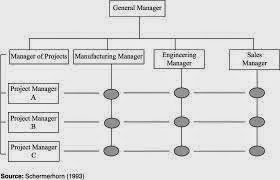Public Private Partnership (PPP) Model of Development in Nepal
1. Background
¨
Development
of essential public infrastructure and services (including roads,
bridges, airports, modern means of communication, drinking water, irrigation,
electricity, railways, cable car, ropeways) is imperative for achieving
sustainable economic growth of the
country.
¨
The
means and resources allocated from national treasury fall short of what is
required for the construction and operation of infrastructure services.
¨
It
is desirable to make assets of public utility and operation of public services
less costly, effective and reliable.
¨
For
this the means, resources, skills and
technology available with the private sector must be attracted towards
development works of the nation based on the concept of Public Private
Partnership (PPP).
¨
It
is believed that the contribution of infrastructure services built on this
model is crucial and effective for providing momentum to economic development
and
¨
Strengthening national economy and making
public services effective by ensuring optimal use of managerial skills,
innovative technology, appropriate human resources and capital available with
the private sector for producing/creating goods and services of public utility
and construction and operation of infrastructure and services.
¨
It
is necessary to create acceptable conducive policy environment addressing the
involvement of private sector appropriately in the construction and operation
of services by executing government’s role more effectively and using
appropriate methods for risk minimization associated with the construction and
operation of public infrastructure and proper management and operation thereof
¨
A
PPP is a contract between an Institution and a private party whereby the
private party renovates, constructs, operates, maintains, and/or manages an
asset to provide a service in whole or in part, in accordance with specified
output specifications.
¨
The
private party assumes the associated risks for a significant period of time and
in return, receives benefits and financial remuneration according to agreed
terms. PPPs constitute a cooperative venture built on the synergy of expertise
of each partner that best meets clearly defined public needs through the most
appropriate allocation of resources, risks and rewards
¨
The
essential aspects of a PPP arrangement that distinguish it from the direct
delivery of a public service by a public sector Institution are:
o
A
focus on project outputs to be provided, not necessarily the inputs to be
employed.
o
The private party accepts the risks and
responsibilities for all activities within the control of the private party
associated with the provision of project outputs.
2. Current status
¨
Nepal
desires to graduate from the least developed country to a developing country
status by 2022 AD. For this, standards
and thresholds set are: gross national income per capita at US Dollar 1,242;
Human Asset Index at 66 and economic vulnerability index at 32.
¨
Based
on the United Nations’ evaluation of 2015, Nepal’s current status shows US
Dollar 659, human asset index as 68.7 and economic vulnerability index as 26.8,
and physical infrastructure services not adequate and reliable.
¨
Presently
in Nepal, “Policy related to Construction, Operation and Handover of Public
Infrastructure 2000” and “Private Sector Investment in the Construction and
Operation of Infrastructure Act 2006” and regulations 2007 under the act are in
force.
¨
However,
at central level no major achievement has been made so far, though some minor
works related to urban infrastructure have been carried out at local levels
through public private partnership model.
¨
Despite
proposals invited several times for the construction of Kathmandu-Terai fast track, successful bidders have not been
selected so far.
¨
Achievements
as expected could not be made despite unsolicited proposal for the construction
of Kathmandu Hetauda Tunnel Highway was endorsed and
agreement was signed long ago.
¨
Likewise,
successful bidders from among those who have submitted their proposals for
cable car operation projects to be implemented at various locations are yet to
be selected.
3. Challenges and Problems
¨
It
has been a major challenge to enhance investment and management of
public-private partnership in the development of infrastructure sector for
Nepal to achieve its target to graduate from LDC to developing country by 2022
AD.
¨
Investment
and responsibilities to be borne by private sector in the operation of public
private partnership projects need to be accomplished within the specific time
from the risk point of view.
¨
To discharge the responsibilities, such as
structuring of projects, land acquisition, coordination and approval, payments
to private sectors and approval for environment impact, within the time limit
as specified in the agreement, by public sector in cooperation with private
sector has been perceived as a challenge.
¨
Procedural
challenges in identification, construction, operation, and handing over of a
project in PPP form are there, and challenges in retaining expertise in legal
and regulatory matters and preparing human resources in maintaining public good governance also remain.
¨
There
are problems like limited resources
and weak professional competence in
the implementation of PPP models for the development and expansion of
infrastructure services in Nepal.
¨
Lack of policy arrangement on proper sharing of risks while executing large
infrastructure and development projects of national importance developed
jointly on PPP concept, lack of proper arrangement to address
Viability Gap Funding (VGF), inability to make the projects selection
process transparent, failure to conduct feasibility study in appropriate
manner, dearth of practices in carrying out independent appraisal of appropriateness of the conducted
studies, lack of investment friendly environment and persistent security and
land acquisition problems are still visible
4. Need for a new
policy
¨
To
deliver quality services by attracting economic means and resources, professional expertise, entrepreneurship,
ability, competence and innovative technology available with the private sector
towards economic development in the construction, up gradation, modernization
and operation of country’s public infrastructure and services.
¨
To
attract and utilize private sector’s investment for public benefits as only
national treasury and government’s sole investment are not enough to achieve
extensive growth to provide adequate and quality services with just the current
investments of 3 to 4 percent of GDP being made towards infrastructure sector,
¨
To
achieve an annual economic growth of 6 to 7 percent since the current status as
mentioned in point 3.1 above, indicates that Nepal requires an investment of
approximately Rs. 10,000 billion by 2022 AD in order to attain extensive growth
in the current infrastructure development sector.
In the given backdrop, the
government of Nepal has formulated “PPP Policy 2015” citing the necessity of
significant changes in current policy, Acts and rules subsequent to the study,
analysis and consultation carried out on national and international practices
for infrastructure development in Public Private Partnership.
. 5.
Conclusion
¨
In
spite of the acceptance of the PPP concept within the country, and progress
with PPP projects at the local level, national level PPP projects and major PPP
infrastructures projects are yet to emerge in Nepal.
¨
Existing
legal arrangements for private financing of infrastructures have to date not
been successfully used.
¨
The
positive overtures from the government, the Nepali business community, and the
international community with regard to PPPs are not being translated into
tangible PPP projects.
¨
The
government acknowledges that both the public and private sectors in Nepal lack
experience with structuring, procuring and managing PPP projects.
¨
It is therefore necessary to improve the
enabling environment through the review of PPP procurement procedures and other
related legislation in Nepal, the introduction of clear, consistent and
transparent procedures and development of strong contractual arrangements.
¨
These will help build the PPP market in Nepal
and to achieve market conditions and levels of confidence in which significant
PPP projects can be implemented involving potential domestic and international
operators and investors.


Comments